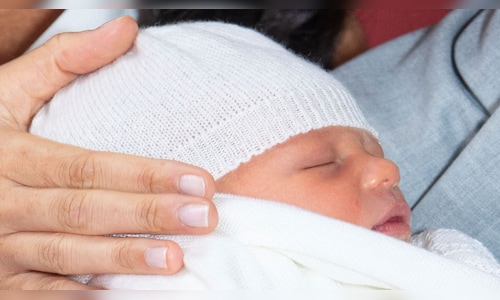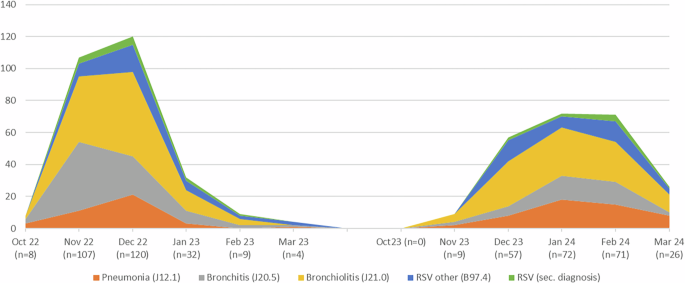
For example, Kerala has a Maternal Mortality Rate (MMR) of 30 per 100,000 live births, although this has increased from 19 per 100,000 in 2022. In contrast, states like Uttar Pradesh and Assam report rates exceeding 150 per 100,000 live births. Similarly, Tamil Nadu maintains a Neonatal Mortality Rate (NMR) below 10 per 1,000 live births, while Bihar and Madhya Pradesh have rates surpassing 30 per 1,000 live births.
The significant regional disparities in health outcomes stem primarily from systemic inequities in healthcare infrastructure, the accessibility and quality of healthcare professionals, and nutritional deficiencies. Additionally, factors outside the health system, including income levels, education, transportation infrastructure, and gender inequality, play a crucial role.
In states such as Kerala and Tamil Nadu, robust healthcare systems lead to higher rates of institutional deliveries and improved maternal health outcomes. Conversely, Uttar Pradesh and Bihar face chronic deficiencies in healthcare facilities and workforce, contributing to their alarmingly high mortality rates. Many rural districts lack essential services, such as operational primary health centres, or offer substandard care.
In Madhya Pradesh and Jharkhand, immunization rates in certain districts are below 50%, and tribal areas are disproportionately affected by issues like anaemia and malnutrition. Additionally, geographic barriers significantly restrict access to healthcare services, severely impacting the availability of antenatal and postnatal care, particularly in northeastern states like Assam.
Policy Implementation and Challenges
India has launched various initiatives aimed at improving maternal and newborn health, yet the effectiveness and execution of these programs differs significantly from one state to another. For instance, Tamil Nadu and Kerala have achieved remarkable success in promoting institutional deliveries through the Janani Suraksha Yojana (JSY), thanks to efficient fund management and proactive awareness efforts.
In contrast, Bihar and Uttar Pradesh struggle with issues like slow financial incentive distribution and insufficient beneficiary awareness, which hinder the program’s effectiveness. Independent audits reveal a concerning rise in unnecessary caesarean sections across various states, linked to insufficient oversight and a lack of necessary checks and balances.
The Pradhan Mantri Surakshit Matritva Abhiyan (PMSMA) has seen successful implementation in Maharashtra and Gujarat, delivering comprehensive antenatal screenings in urban and semi-urban regions. However, the program’s impact is limited in remote areas of Odisha and Jharkhand, where antenatal care coverage falls below the national average due to logistical hurdles and a shortage of trained healthcare personnel.
Karnataka and Andhra Pradesh stand out for their effective use of Ayushman Aarogya Mandirs (previously known as Health and Wellness Centres) to enhance maternal and newborn care, benefiting from better resource distribution and a well-trained workforce. On the other hand, Bihar and Uttar Pradesh experience significant service gaps, including inconsistent access to specialized maternal and newborn care packages. Additionally, diagnostic facilities essential for managing high-risk pregnancies are inadequate in these regions.
The implementation of Surakshit Matritva Aashwasan (SUMAN) has established strong protocols in Telangana and Himachal Pradesh, ensuring that services are not denied and that care is accessible in rural communities. Conversely, states like West Bengal and Madhya Pradesh encounter resource limitations and lack effective monitoring systems, which hampers the delivery of consistent and quality services.
Anaemia continues to be a significant obstacle to the health of mothers and newborns. It particularly impacts rural and tribal communities in states like Bihar, Jharkhand, Odisha, and Madhya Pradesh, where access to a varied diet is limited. In Jharkhand, for instance, nearly 65% of pregnant women are affected by anaemia, which increases the likelihood of preterm labour and complications after childbirth. The uneven execution of the Anaemia Mukt Bharat initiative leads to poorer results in these regions when compared to states such as Kerala and Himachal Pradesh.
Bridging the Gaps
- Improving Physical Infrastructure:
- While Kerala and Tamil Nadu already boast advanced facilities, further enhancing diagnostic and neonatal care units could lead to even better health outcomes. In the northeastern states, such as Assam and Meghalaya, substantial investments in transportation infrastructure and mobile health units are essential for serving remote communities. In Jharkhand, transforming sub-health centres into fully operational primary health centres is vital for catering to tribal and isolated regions.
- Strengthening Human Resources:
- Offering incentives for rural positions may encourage doctors and specialists to practice in underserved regions of states like Rajasthan and Orissa. It is crucial to prioritize the training and recruitment of local talent, as these individuals are more likely to remain in their communities rather than relying on outsiders to relocate, particularly over the medium to long term. Focused recruitment efforts in Uttar Pradesh and Bihar can help address significant workforce shortages, particularly in regions with high demand. Regular training workshops would greatly benefit healthcare professionals in Madhya Pradesh and Chhattisgarh, where the quality-of-care needs enhancement.
- Utilising Technology and Telemedicine:
- Telemedicine initiatives in Andhra Pradesh and Karnataka have successfully increased access to healthcare in rural areas. Establishing similar systems in Bihar and Uttarakhand could link remote patients with urban healthcare providers. Rajasthan is at the forefront of implementing electronic medical records, and promoting similar digital platforms in Assam and Nagaland could enhance ongoing maternal and child health management.
- Addressing Anaemia:
- It is essential to bolster community outreach efforts in Bihar and Odisha to encourage healthier eating habits and dietary diversification. School-based supplementation programs for adolescent girls should be expanded in Rajasthan and Madhya Pradesh. In Assam and Chhattisgarh, introducing fortified food staples through the public distribution system can help bridge nutritional deficiencies.
State-Specific Approaches for a Healthier Tomorrow
To ensure equitable maternal and newborn health outcomes, it is vital to implement targeted interventions based on data analysis at both the state and district levels. For instance, in states like Kerala and Tamil Nadu, enhancing the mother-child tracking systems is key to pinpointing communities that lack adequate services. In Bihar and Odisha, it is vital to allocate funds for hospital improvements and to strengthen the healthcare workforce. Creating incentives for local healthcare providers to remain in and serve remote areas in Assam and Uttarakhand is of the essence. In Madhya Pradesh and Chhattisgarh, there is a need to expand mobile health units and incorporate community-based initiatives for greater impact. In the northeastern states, it is essential to tackle challenges related to transportation infrastructure and accessibility, beyond health system improvements.
Collective Action for Advancing Maternal and Newborn Care in India
In a large and diverse country like India, ensuring effective and equitable access to maternal and newborn health services is a significant challenge. Tailored strategies that cater to regional requirements, increase public health funding, and reduce disparities among and within states are vital. This article emphasizes the essential upgrades needed in the health and nutrition system to boost maternal and newborn health. However, it is also crucial to consider additional factors like maternal education, access to clean water and sanitation, transportation, and gender inequality. A comprehensive approach that combines all these elements will lead to more meaningful impact. Ensuring the well-being of every mother and newborn is essential, as it lays the foundation for a healthy nation.
—The author,Urvashi Prasad, is Former Director NITI Aayog, and a Public Health Specialist. The views are personal.
link




/countries/new-caledonia-(france)/mother-and-child.tmb-1200v.jpg?sfvrsn=fc2ff348_1)

